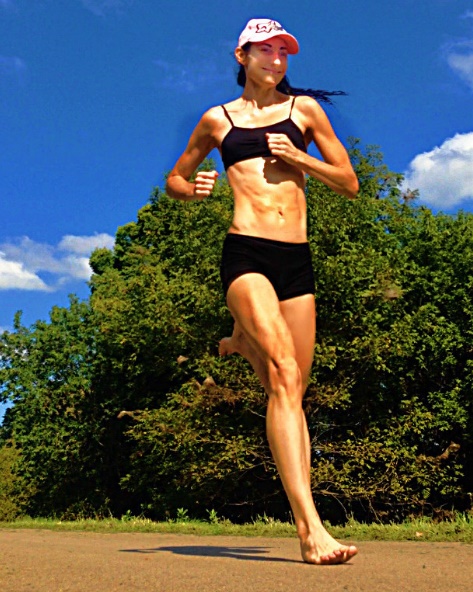Barefoot running actually makes you land more safely on your feet as compared with running in thickly cushioned shoes. When you run barefoot, the brain uses the strong sensory cues and tactile feedback from the ground to set the reflexes in motion that produce significantly less impact-intensive foot-ground interactions. This includes a forefoot strike landing while the knee of the landing foot is kept bent and flexed which collectively buffers against damaging impacts and may work best for sustaining better as a more effective means for impact-protection as compared with thickly cushioned running shoes. Ultimately, this (forefoot striking) is the natural course of the lower leg mechanics seen in most barefoot runners who tend to injure less than shod (shoe) runners. Forefoot running is also commonly seen in many of the best runners in the world, from East Africa, most of which grew up running barefoot and hold most world records and consistently place in the top 3 on the world stage in most races (from 5-km to the marathon), which may suggest that their efficient, tough-to-beat running style was curated by running barefoot during critical stages of development. Bottom line, there’s hard, conclusive evidence showing that the sensory cues that flow from running barefoot are linked directly with triggering reflexive mechanisms in the body that drive specific mechanical outputs that are strongly protective against many impact force variables underlying most common running-related injuries. This is why barefoot runners are able to run worry-free of injury, in the absence of underfoot protection, because its partly the forefoot strike that causes them to NOT generate any more impact, regardless of surface hardness! The opposite appears to be true for most shod runners in that increased underfoot cushioning is on record for driving more force-intensive and unbalanced footsteps during running. This is why many experts confirm that efforts to reduce injury-risk should focus on running in shoes that give a more natural connection with the ground (i.e. run barefoot or in shoes that feel as if you’re nearly barefoot). Read more here on barefoot vs shoes in the context of injury prevention in running.
Is it OK to Run Barefoot?

